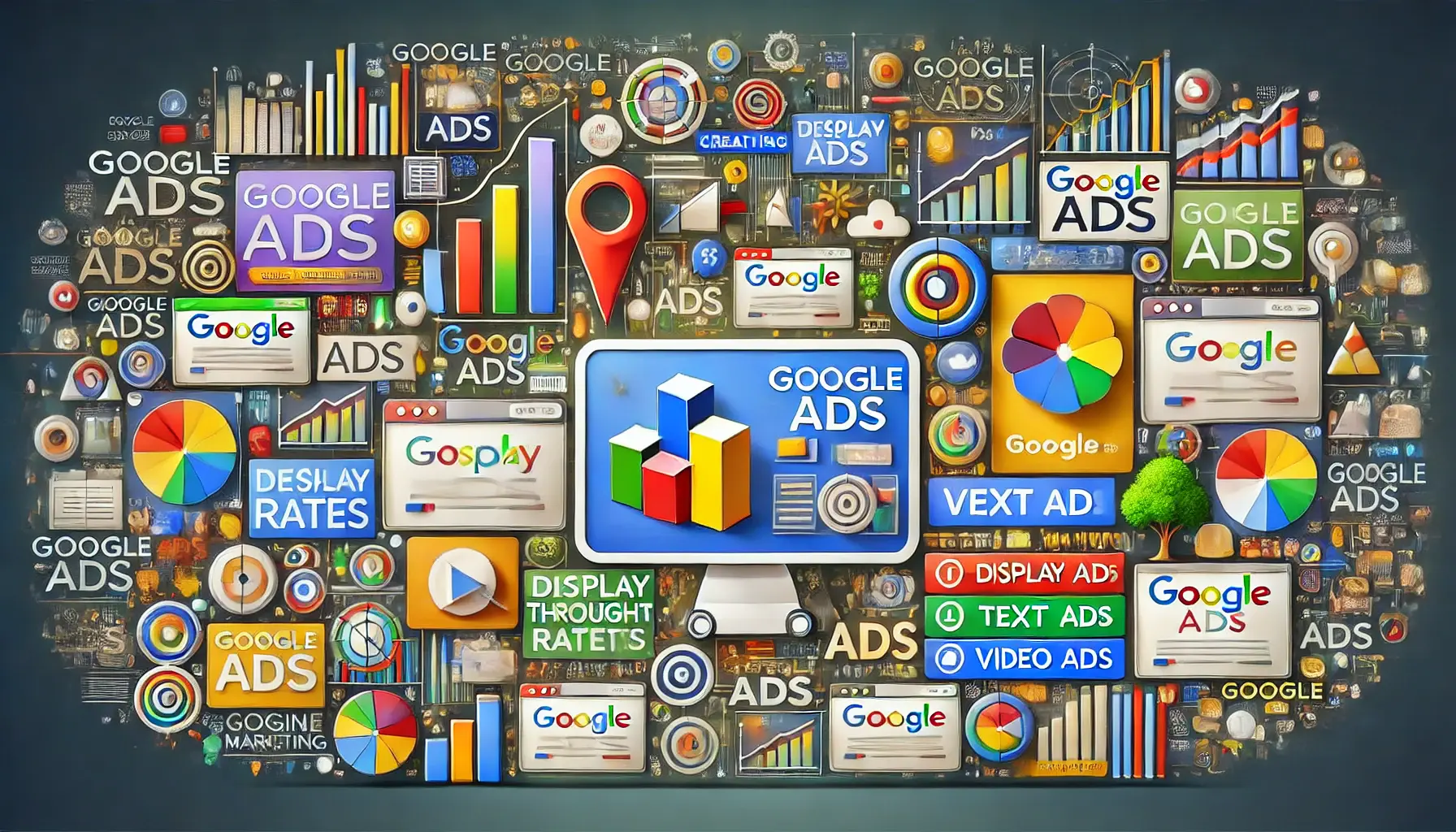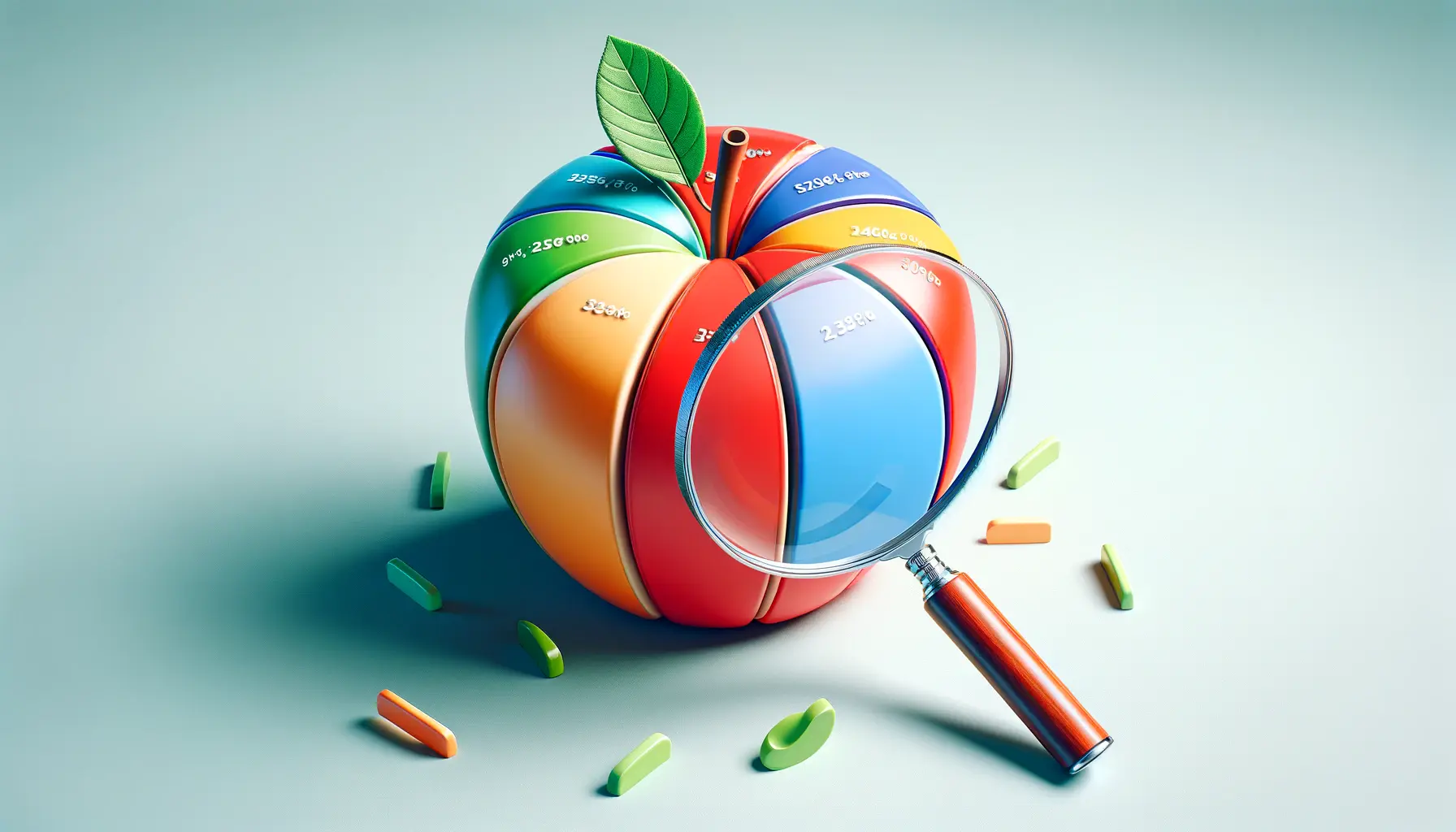Standing out with your ad in the competitive field of digital marketing isn’t exactly easy.
That’s where ad creative variations come in.
Google Ads lets marketers test different variations of their ad creative and optimize to reach the best combination that works for their target audience.
But why is it so important for ad creative variations to bring success to your Google Ads campaigns?
How will they impact your broader advertising strategy?
In this article, we will dive deep into the concept of ad creative variations and explore how you can use them to maximize your campaign performance.
Let’s begin by understanding the importance of ad creative variations and how they can drive better results in your marketing efforts.
- Understanding Ad Creative Variations in Google Ads
- Best Practices for Creating Effective Ad Creative Variations
- Measuring and Analyzing Success of Ad Creative Variations
- Common Mistakes to Avoid When Using Ad Creative Variations
- Emerging Trends and Innovations in Ad Creative Variations
- Conclusions: How to Master Ad Creative Variations in Google Ads
- Frequently Asked Questions About Ad Creative Variations in Google Ads
Understanding Ad Creative Variations in Google Ads
Ad creative variations refer to the different versions of an ad that marketers make, test, and run to best resonate with their audiences.
What is unique about Google Ads is that you can test different ad copies, visuals, headlines, and calls to action, giving you more latitude in how you approach your advertising strategy.
These ad creative variations provide valuable insights into customer preferences, which may ultimately help in refining your overall marketing campaigns.
The reason ad creative variations matter is because of their power to improve relevance.
By testing different variations, you can discover which version of your ad performs better across different audience segments, giving you a competitive edge in capturing attention and driving conversions.
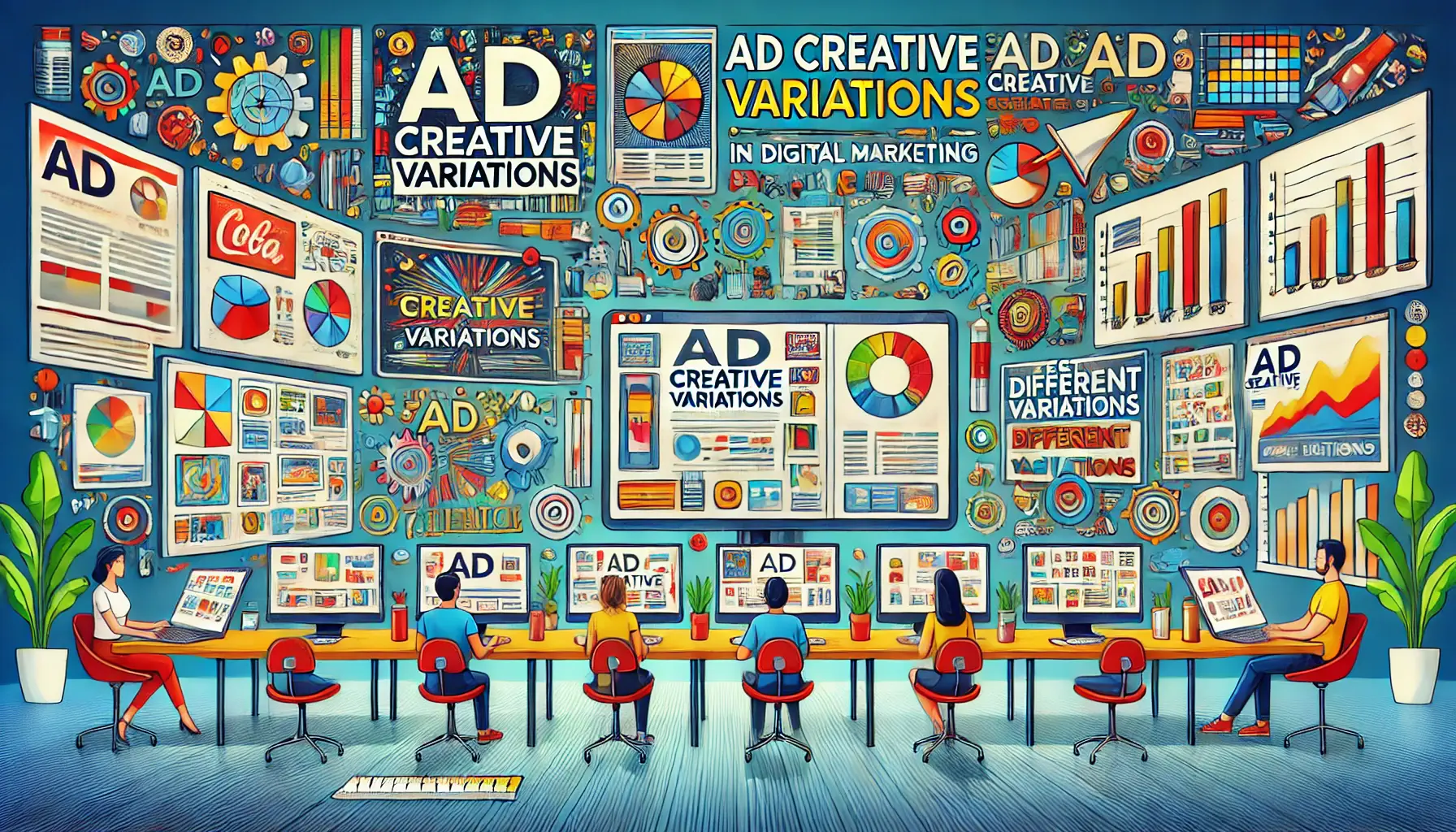
A creative workspace showcasing various ad formats.
What Are Ad Creative Variations?
Ad creative variations refer to the different elements of an ad that can be modified to create multiple versions.
These elements can include text, images, colors, fonts, and calls to action.
This is done to determine which combination does the best job of capturing your audience’s attention.
For example, one version of an ad might feature a bold headline, while another may focus on a visually appealing image.
Testing such ad creative variations helps understand what resonates most with your target audience.
With the frequent updating and testing of ad creative variations, your ads can stay fresh in a crowded digital space and maintain relevance.
This keeps your audience engaged and reduces the risk of ad fatigueA phenomenon where viewers become desensitized to an ad after seeing it repeatedly., where users become indifferent to seeing the same ad repeatedly.
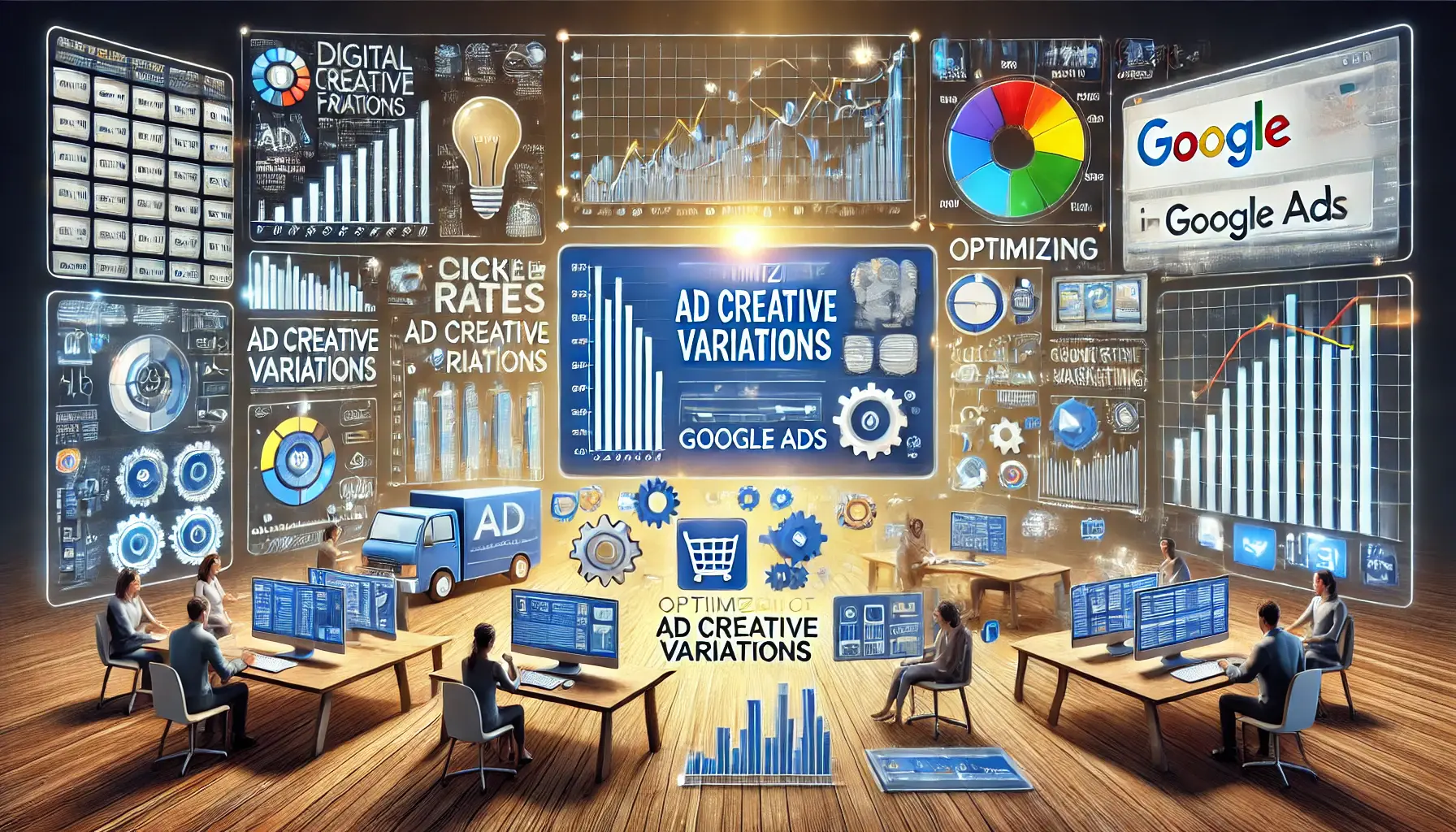
Digital marketing dashboard showcasing metrics for ad performance.
Why Ad Creative Variations Matter in Google Ads
Ad creative variations are important to improve your campaign’s performance.
They allow you to adapt to any changes happening in the needs and preferences of your audience.
The following reasons highlight why they are so effective:
- Increased Relevance: Different audiences respond to different messaging. Ad creative variations help you understand which message resonates with specific segments.
- Improved Click-Through Rate (CTR): Testing various headlines or creative elements can increase the CTR of your ad, translating into more visitors flowing to your site.
- Better Conversion Rate: By optimizing the creative elements that capture attention, you will be able to increase your conversion rates significantly.
- Reduced Ad Fatigue: The same ad shown over and over can cause people to tune out. Regularly refreshing ad creative variations keeps your audience engaged.
Variations in ad creatives on Google Ads enable you not only to optimize your campaigns but also to outpace your competition by continually refining your marketing strategies.
Ad creative variations help refine ads to match audience preferences and improve campaign performance.

A collaborative brainstorming session on ad creative variations.
Best Practices for Creating Effective Ad Creative Variations
Knowing the importance of ad creative variations in Google Ads, let’s dive into some best practices that will help you create effective ad variations.
The right mix of ad creatives will have a significant impact on how your campaigns perform.
By following these best practices, ad creative variations will enhance audience engagement and conversions.
These strategies will guide you in testing and optimizing your ads to perfection:

Diverse individuals interacting with tailored advertisements.
Customizing Ads for Target Audience Segments
No two audiences are ever alike, and what works for one audience might not work as well for another.
You can target a single ad through demographic splits, interests, or behaviors to create different variations of that ad.
For example, you may want to test different headlines, images, or calls to action for users in different age groups or geographic regions.
Using ad creative variations in this way allows you to deliver more relevant content, driving higher engagement and conversions.
- Focus on demographic data in Google Ads for creating variations.
- Apply different messaging strategies across segments.
- Analyze which variation performs best for each segment to refine your approach.

A user interacting with a dynamic advertisement on a digital device.
Using Dynamic Ads for Personalized Experiences
Dynamic Ads utilize ad creative variations so that users see different product images, offers, or messages based on their behavior.
For example, if a user has browsed a certain product on your website, you can display a variation that contains that product in the ad.
Dynamic ads allow you to automatically run variations using Google’s dynamic ad tools, based on user behavior on your site.
This helps in providing personalized and relevant ad experiences to each individual.
- Use product images in dynamic ads to feature specific offers.
- Leverage dynamic ads to keep fresh content that is relevant to each user.
- Maximize Google’s dynamic ad tools for automated variations.
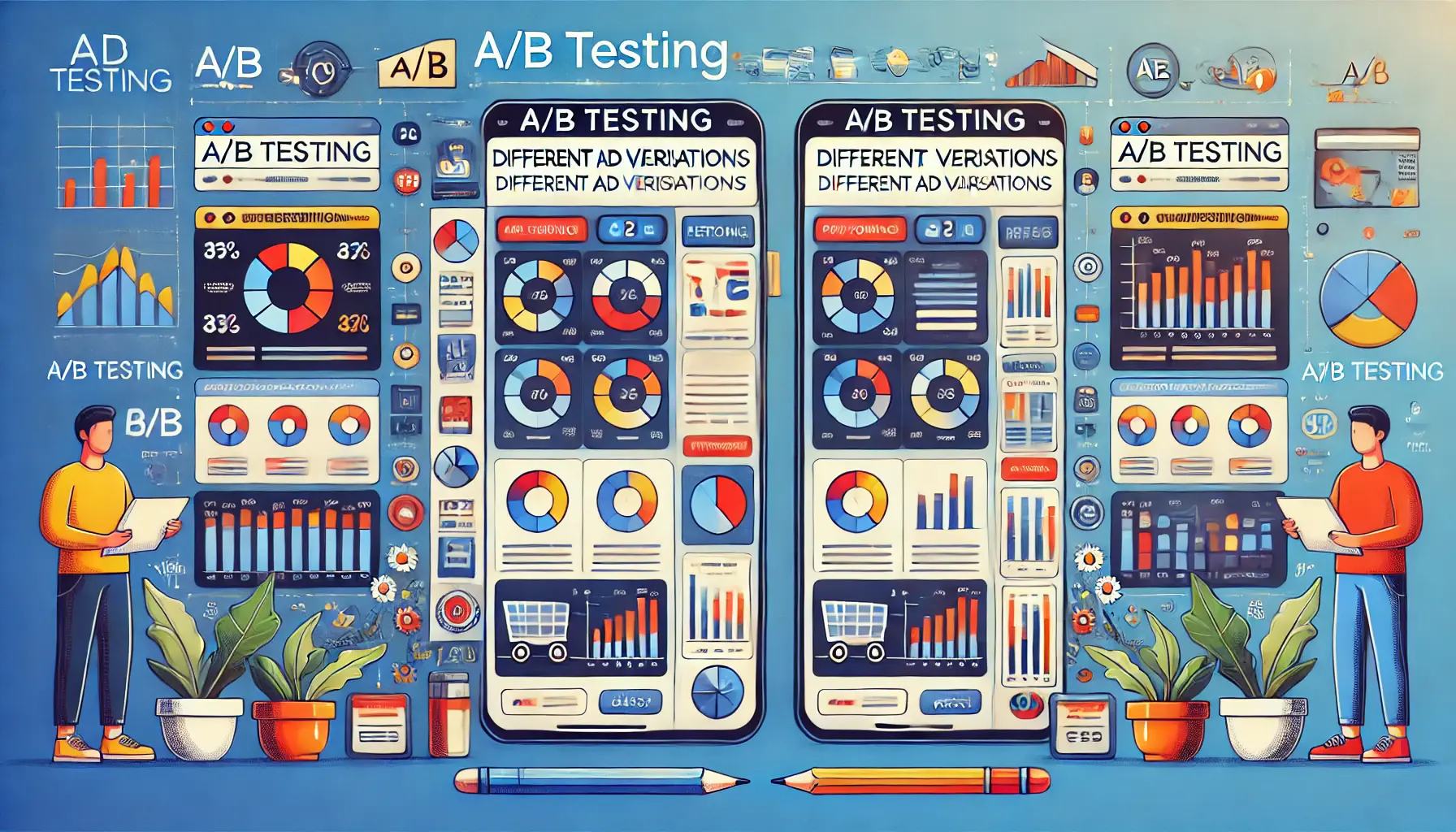
Split-screen view of two different ad versions for comparison.
A/B Testing Different Ad Variations
With Google Ads, you can try A/B testingA method of comparing two versions of an ad to determine which performs better. to compare different versions of the same ad.
By comparing metrics like CTRClick-through rate, the ratio of users who click on a link compared to the number who view it., conversion rate, and engagement, you’ll know which version of your ad creative variations works better with your target audience.
When conducting A/B tests, change only one variable at a time—it might be the headline, image, or call to action—so you can pinpoint what causes the performance difference.
- Set up A/B tests within Google Ads to compare different versions of your ad.
- Test one variable at a time for accurate results.
- Use test data to continuously improve your ad creative variations.
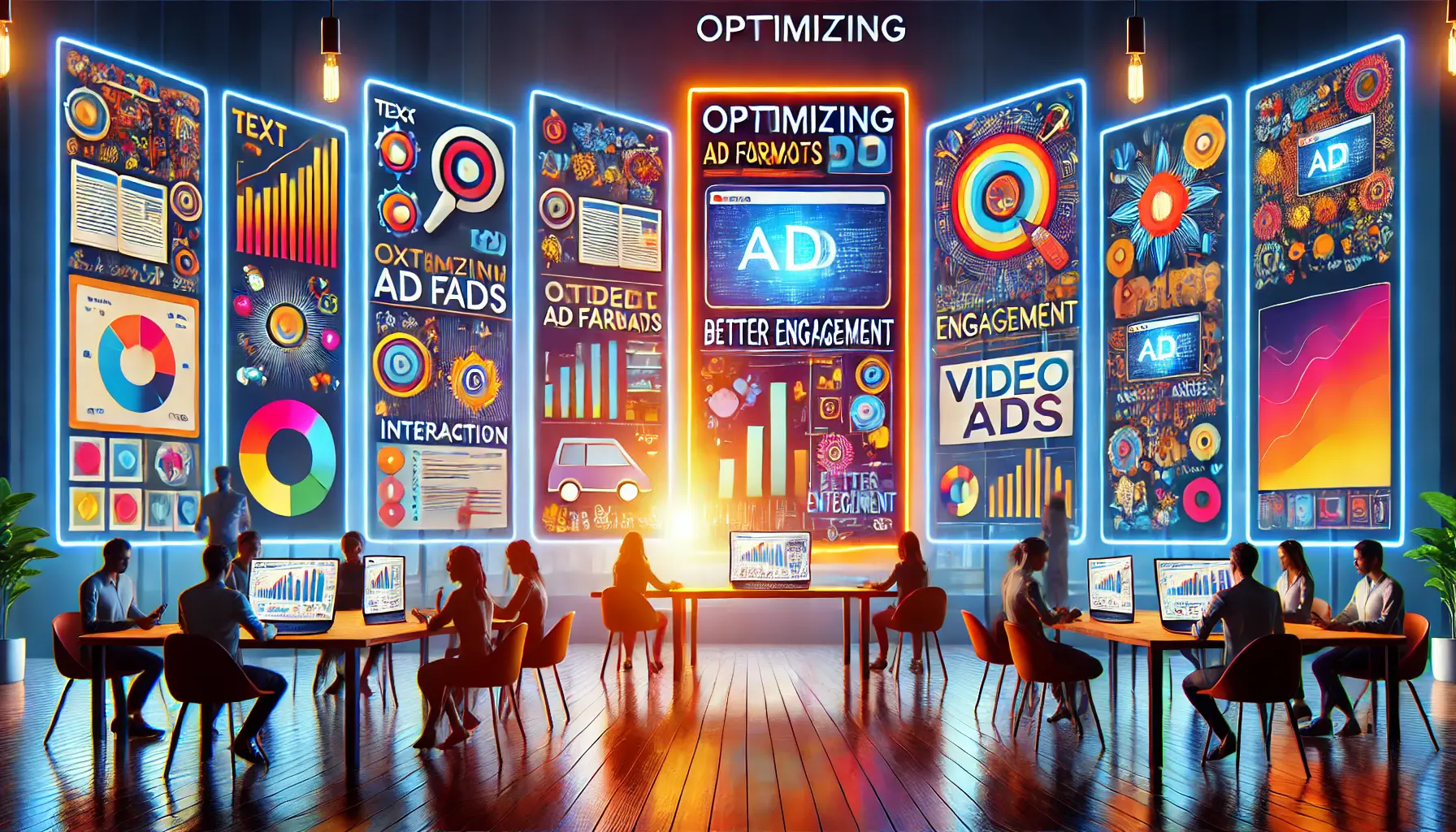
A variety of ad formats displayed on multiple screens for audience engagement.
Optimizing Ad Formats for Better Engagement
Google Ads offers various ad formats such as text ads, display ads, video ads, and shopping ads.
Each format has its strengths, and testing different formats as part of your ad creative variations strategy can show you which type of ad works best for your business.
For example, video ads often have higher engagement rates on platforms like YouTube, while display ads might perform better in retargeting campaigns.
The key is to test various formats and align them with your campaign goals.
- Experiment with different ad formats like video, display, and text ads.
- Monitor engagement metrics for each format to determine which resonates most with your audience.
- Align ad formats with campaign goals to improve overall performance.
By following these best practices, you will ensure that your ad creative variations are tailored to your audience’s needs and preferences, leading to higher engagement and better overall performance for your Google Ads campaigns.
Target ads to audience segments using demographic data and dynamic adsAds that automatically adjust content based on user behavior or preferences. for a personalized experience.

Analytics dashboard displaying key performance metrics for ad creative variations.
Measuring and Analyzing Success of Ad Creative Variations
Creating effective ad creative variations is only part of the equation.
To truly optimize your Google Ads campaigns, you need to analyze and measure the performance of these variations.
This is an important step as it helps you understand what works and what doesn’t.
Now, let’s dive into how you can analyze the performance of your ad creative variations and leverage data to further optimize your campaigns.
Below are some of the key metrics you will want to track to measure the performance of your ads.
These metrics give you a clear picture of your ad performance—whether the variations are effective and making a positive impact on your campaign:
- Click-Through Rate (CTR): This metric shows the number of people clicking on an ad out of those who viewed it. A high CTR means that your ad is relevant and attention-grabbing to your targeted audience.
- Conversion Rate: The number of people who take an intended action after seeing your ad, such as making a purchase or signing up. This is the key metric to determine how well your ad creative variations are driving conversions.
- Cost Per Conversion (CPC): CPC gives you an idea of how much you pay per conversion. Lowering the CPC through optimized ad creative variations can enhance your return on investment (ROI).
- Ad Relevance Score: Google Ads assigns a relevance score based on how well your ad matches the user’s search intent. Improving the relevance score can help your ad rank higher and reduce ad costs.
Focusing on these metrics will allow you to understand how effective your ad creative variations have been and identify areas for improvement.

User interacting with a Google Ads reporting dashboard.
Using Google Ads Reporting Tools
Google Ads offers a range of reporting tools to help you measure the performance of your ads.
These tools provide valuable insights into how your ad creative variations are performing and allow you to dive deeper into the data for a better understanding of your campaigns.
You can create custom reports with the Google Ads dashboard to track specific metrics like CTR, conversion rate, and CPCCost per conversion, the amount paid for each conversion in an ad campaign..
These reports give you flexibility in analyzing performance across different audience segments, ad formats, and time periods.
- Use the Google Ads dashboard to track key performance metrics.
- Create custom reports to analyze specific aspects of your campaign.
- Compare the performance of different ad creative variations to ensure you’re running the best performer.
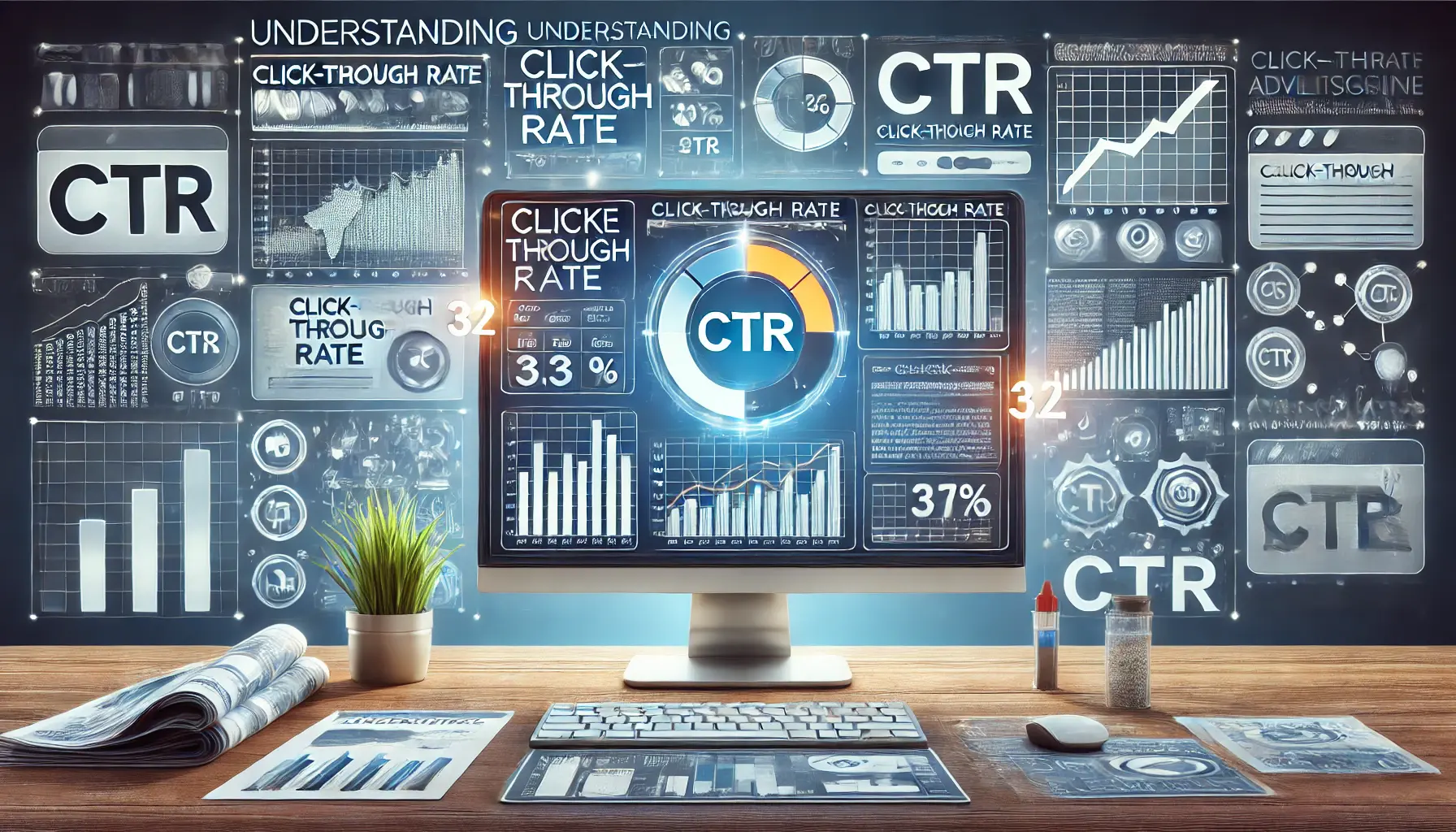
Analytics dashboard focusing on CTR metrics.
Understanding the Role of Click-Through Rate (CTR)
CTR directly reflects how well your ad creative variations resonate with your target audience.
A high CTR means the ad is relevant enough to compel users to click on it.
However, CTR alone doesn’t tell the full story—it should be analyzed alongside other metrics like conversion rate and CPC.
For example, a high CTR but a low conversion rate may suggest that while users are interested in your ad, they may not find your landing page or offer compelling enough to complete the desired action.
This is why continuously testing and optimizing your ad creative variations is so important.

User analyzing conversion data report on a computer.
How to Interpret Conversion Data
Conversion data reflects the effectiveness of your campaign; it shows how many users completed the desired action after interacting with your ad, such as making a purchase, signing up for a newsletter, or downloading an app.
The conversion rate is essential when analyzing conversion data, but you should also pay attention to how different ad creative variations impact this rate.
If one variation has a significantly higher conversion rate than another, that’s a strong indication of which creative elements resonate with your audience.
You can then use this information to refine your ad creative variations further, focusing on elements that result in the most conversions.
- Analyze conversion data to identify top-performing ad creative variations.
- Use conversion insights to refine and optimize creative elements.
- Continuously test new variations to keep improving conversion rates.
By effectively analyzing and measuring the success of your ad creative variations, you’ll be able to create more targeted, engaging, and high-performing ads that boost your overall campaign results.
Metrics such as CTR, conversion rate, and CPC are critical for analyzing ad performance.
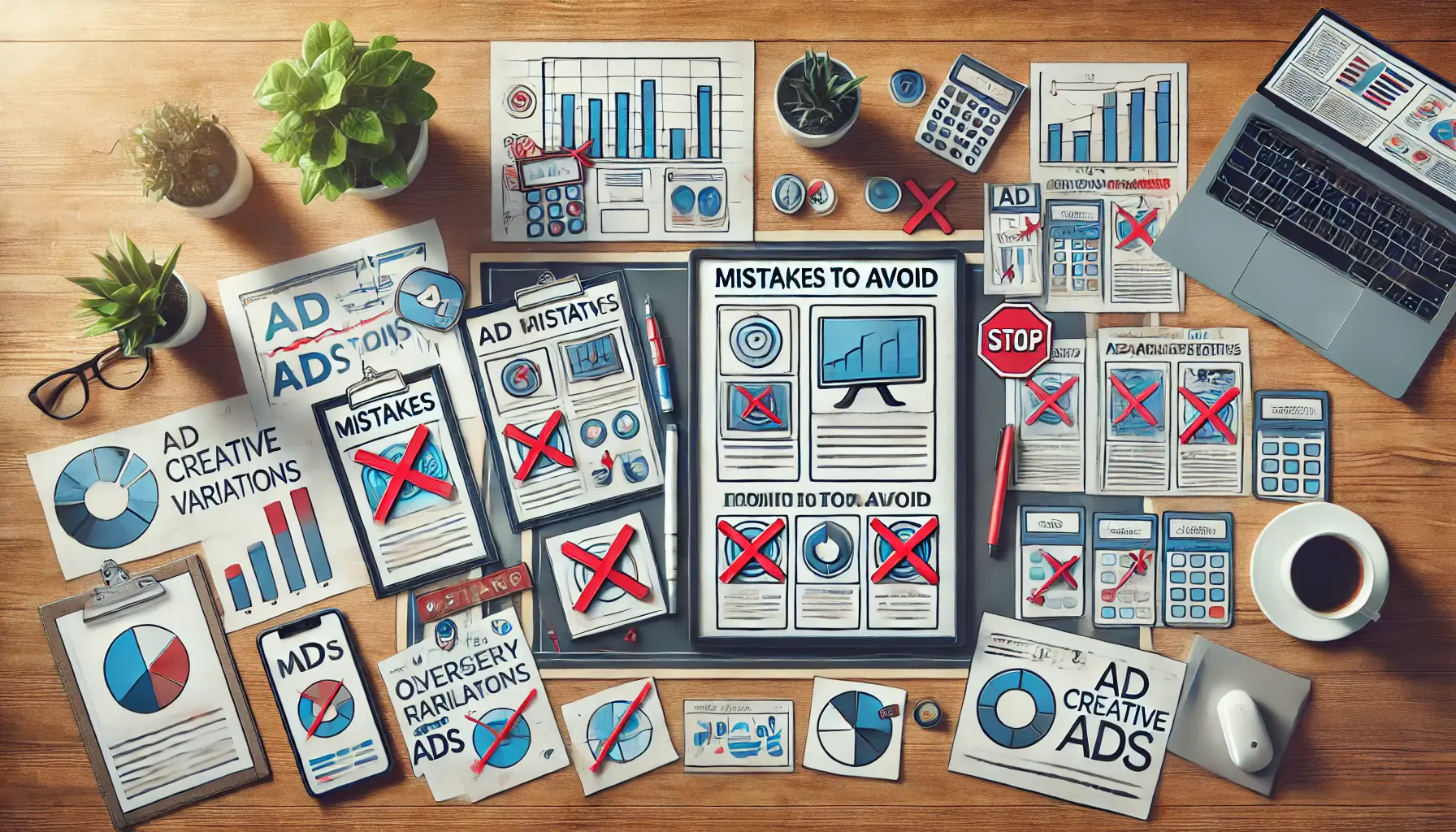
Creative workspace illustrating mistakes in ad creative variations.
Common Mistakes to Avoid When Using Ad Creative Variations
As much as ad creative variations can significantly help in improving your Google Ads performance, they also come with their own challenges.
If not used properly, these variations can end up hurting your campaign rather than helping it.
The following are some of the common mistakes marketers make when trying to test and optimize their ads.
Avoid these mistakes to get the most out of your ad creative variations.

Computer screen showing similar ad designs highlighting redundancy.
Overusing Similar Ad Variations
Creating variations that are too similar to one another is a common mistake.
While core messaging needs to remain consistent, if your variations are almost identical, you won’t learn much from the testing process.
Minor changes, such as replacing a single word in the headline or swapping one picture, may not provide actionable insights.
For a clearer understanding of what resonates with your audience, create ad creative variations that test distinct differences.
For example, test completely different headlines, calls to action, or even a different format, such as text ads versus display ads.
By testing larger variations, you can gain deeper insights into what your audience prefers.
- Make sure your ad creatives test clear, obvious differences in headline, image, and format.
- Refrain from making only minor changes that aren’t likely to yield meaningful results.
- Test different messaging strategies to learn what works best with your audience.

User distracted from performance metrics on a computer screen.
Ignoring Data-Driven Insights
Another common mistake is not using data-driven insights to guide decisions.
Running ad creative variations without analyzing performance data can lead to missed opportunities.
Always make decisions based on data rather than assumptions or gut feelings.
Google Ads provides detailed reporting tools that track key metrics such as click-through rate (CTR), conversion rate, and cost per conversion (CPC).
These metrics are valuable for determining which variation is performing best and should be optimized.
Ignoring data-informed insights can lead to inefficient ad spending and missed opportunities to improve.
- Utilize Google Ads reporting tools to analyze key performance metrics for each variation.
- Make data-driven decisions when optimizing ad creative variations.
- Avoid relying solely on assumptions or intuition.
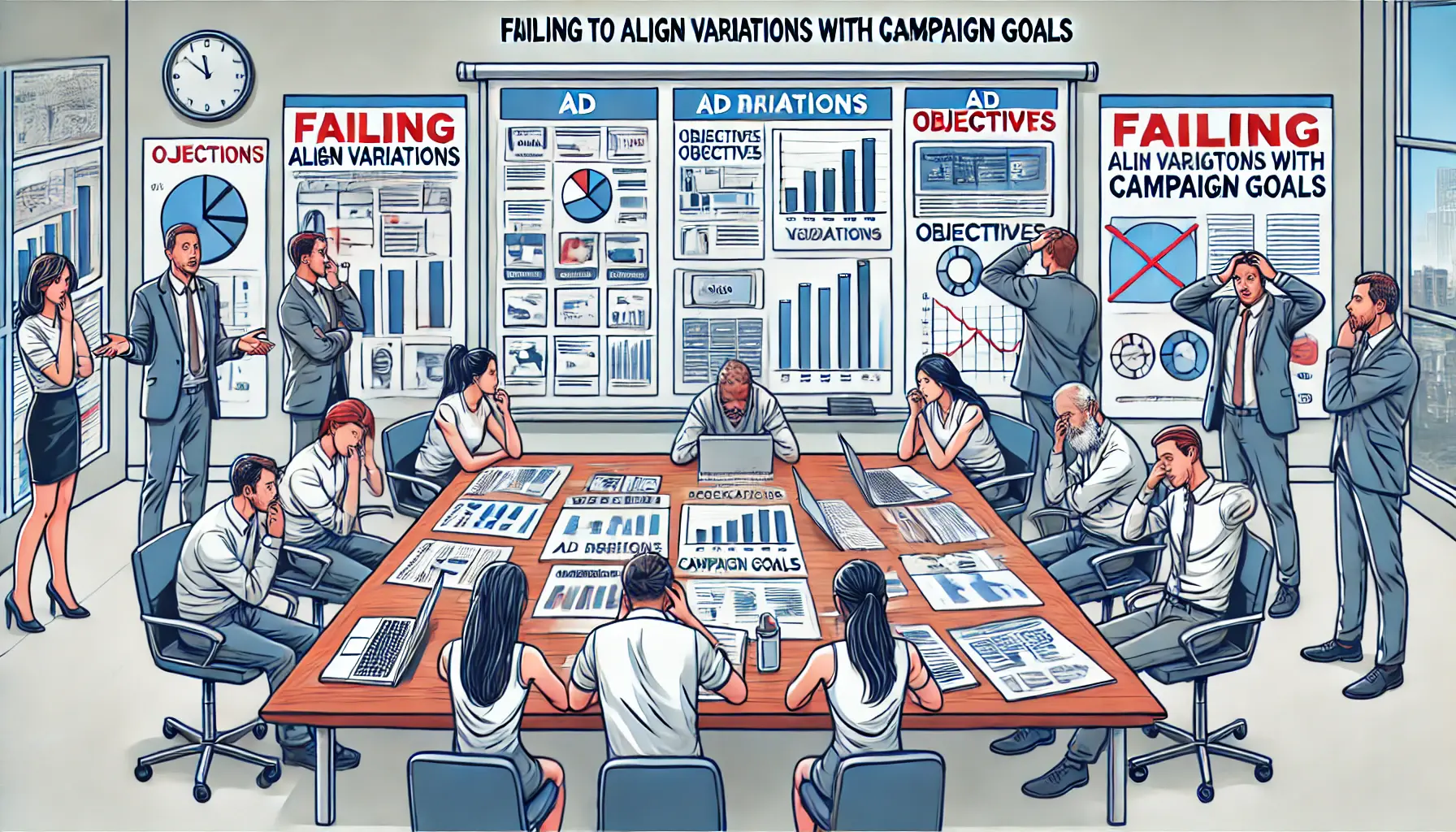
Marketing team analyzing mismatched ad variations and campaign goals.
Failing to Align Variations with Campaign Goals
Another critical mistake is failing to align ad creative variations with your broader campaign goals.
For example, if your primary goal is to drive conversions, your variations should focus on compelling calls to action, user-friendly design, and clear messaging that encourages action.
If your goal is brand awareness, more emphasis should be placed on creative elements that highlight your brand’s unique value proposition.
A mismatch between ad variations and campaign goals often results in poor performance.
It’s essential to clearly define your objectives and create variations tailored to achieving those goals.
- Ensure that ad variations are aligned with the goals of your campaign.
- Tailor creative elements based on whether your goal is conversions, brand awareness, or engagement.
- Regularly assess how well your variations meet your objectives and adjust accordingly.
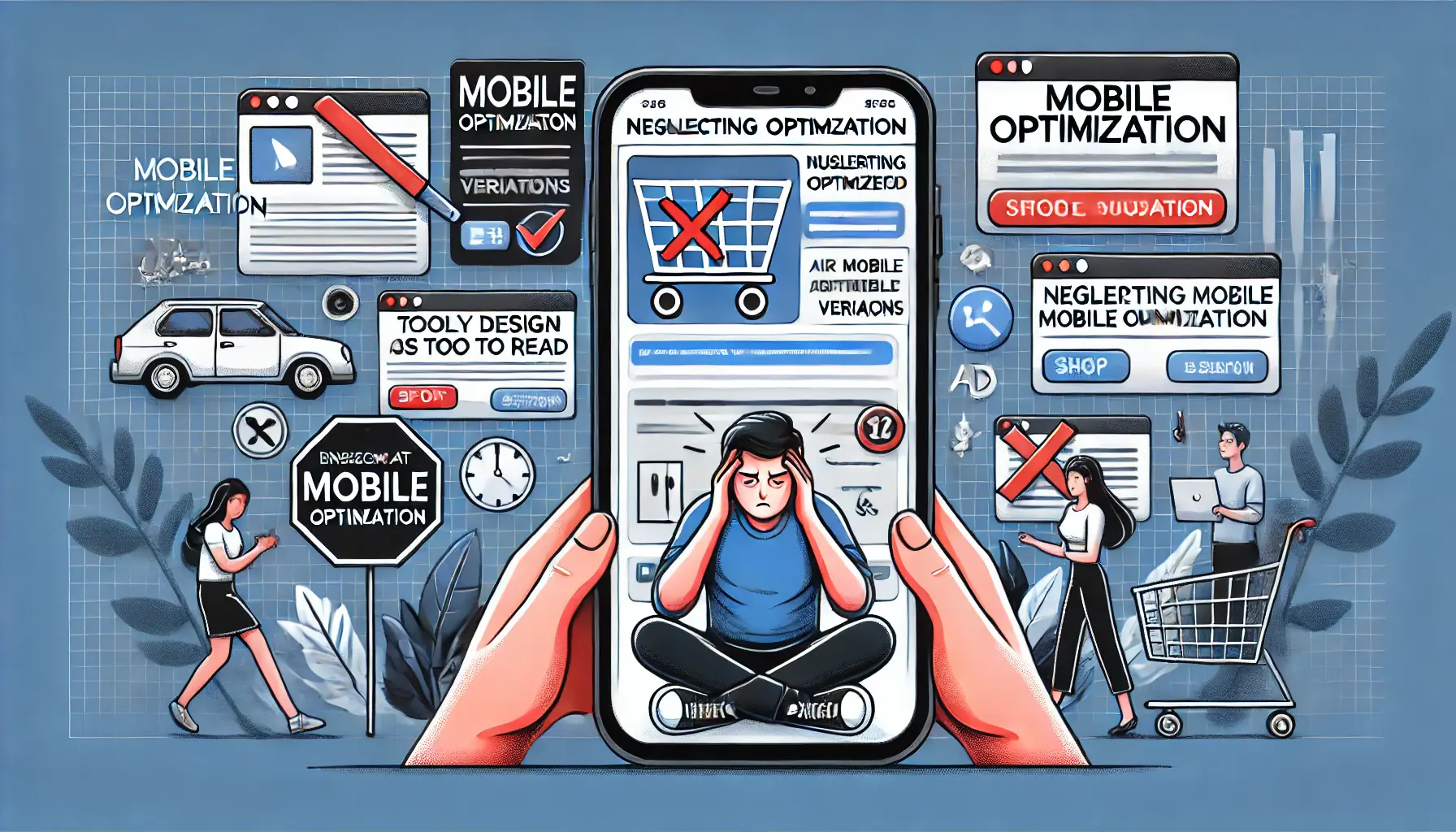
Smartphone displaying a poorly designed ad that is not optimized for mobile viewing.
Neglecting Mobile Optimization in Variations
Mobile traffic is an increasingly important source of traffic for most businesses, and Google Ads campaigns are no exception.
A common mistake is not optimizing ad creative variations for mobile devices.
Ads that perform well on desktop might not work as effectively on mobile, particularly if they aren’t designed for smaller screens.
When creating ad creative variations, ensure that you consider how they will appear on mobile devices.
This involves testing mobile-friendly formats, simplifying headlines, and ensuring that images or videos are optimized for mobile viewing.
- Ensure that ad variations are fully optimized for mobile devices.
- Test mobile-friendly ad formats and adjust creative elements accordingly.
- Track mobile-specific performance metrics to ensure that ads resonate with mobile users.
By avoiding these common mistakes, you can ensure that your ad creative variations effectively drive results and maximize the potential of your Google Ads campaigns.
Avoid creating overly similar ad variations, as they limit insight into what works best with your audience.

Futuristic digital workspace showcasing dynamic ads and advanced technology.
Emerging Trends and Innovations in Ad Creative Variations
The digital advertising space has been in a constant flux of change, and the future of ad creative variations is going to be even more interesting.
Due to advancements in AI, machine learning, and changing consumer preferences, advertisers will need to stay on their toes to keep up with emerging trends and further optimize their Google Ads campaigns.
Below are some of the future trends and innovations that are shaping the way ad creative variations are employed in digital marketing.

Computer screen showcasing personalized advertisements generated by AI.
AI-Powered Ad Personalization
Artificial intelligence has been gaining momentum in digital advertising.
AI-powered tools can auto-produce and test hundreds of ad creative variations based on user behavior, preferences, and demographics.
This ensures personalization, making each ad more relevant to individual users, thereby increasing engagement and conversion rates.
With the help of AI, advertisers can create dynamic ads that change in real time, delivering the right message to the right person at the right time.
Google Ads already uses machine learning to optimize bids and placements, and in the future, AI will take a more central role in generating creative elements like headlines, images, and calls to action.
- AI can help automate the personalization of ad creatives by auto-generating many variations.
- AI-powered dynamic ads adapt to users’ preferences and behavior.
- AI-powered tools will accelerate the testing and optimization of multiple ad variations.

Screens showcasing dynamic video ads and interactive advertisements.
Video and Interactive Ad Formats
With consumer preferences continuously shifting toward more engaging and visually rich content, video and interactive ad formats will become even more important.
Video ads are particularly effective at capturing attention and engaging audiences compared to static ads.
Google Ads already provides video ad options through platforms like YouTube, and more interactive ad formats are on the way.
Interactive ads, such as product demos or quizzes, will provide more immersive experiences.
These formats will offer greater opportunities to test and optimize ad creative variations that capture users’ attention and drive conversions.
- Video ad formats will continue to grow due to their higher engagement rates.
- Interactive ad formats will offer more immersive experiences for users.
- Testing video and interactive ad variations will be crucial for successful campaign performance.

High-tech workspace showcasing algorithms and analytics for ad performance.
Automation and Machine Learning in Ad Optimization
Automation has already become a key trend in digital advertising, and machine learning continues to play a huge role in optimizing ad creative variations.
In the future, we can expect even greater integration of automation tools that not only handle bidding and placements but also autonomously create and test various creative elements.
Google Ads’ automation tools allow advertisers to quickly test and analyze multiple variations at scale.
Machine learning algorithms will continue to enhance the ability to predict which ad creative variations will perform best for specific audience segments, helping advertisers refine their strategies in real-time.
- Automation tools will speed up the process of testing and optimizing ad variants.
- Machine learning will enable creative adjustments in real-time based on performance data.
- Automation allows advertisers to scale campaigns more efficiently.

Digital marketing team discussing privacy regulations and ad performance.
The Role of Privacy Regulations in Ad Variations
As privacy concerns grow and regulations like GDPRGeneral Data Protection Regulation, a European law on data protection and privacy. and CCPACalifornia Consumer Privacy Act, a U.S. law protecting consumer privacy rights. become more prevalent, advertisers must navigate how they collect and use consumer data while maintaining the effectiveness of ad creative variations.
Privacy regulations will influence how ads are personalized, as brands need to ensure compliance with data protection laws without compromising the relevancy of their ads.
Advertisers must adopt transparent data practices and explore alternatives such as first-party data or contextual targeting to deliver personalized experiences while adhering to privacy guidelines.
- Privacy regulations will influence how advertisers personalize ads and collect data.
- First-party data and contextual targeting will become more important for ad variation strategies.
- Advertisers will need to balance personalization with privacy compliance.
As digital advertising continues to evolve, staying ahead of these trends and innovations will be essential for marketers looking to maximize the impact of their ad creative variations.
Embrace AI, interactive formats, automation, and privacy-conscious strategies to keep your Google Ads campaigns competitive in a constantly changing digital environment.
AI, automation, and machine learning are transforming how ad creative variations are tested and optimized.
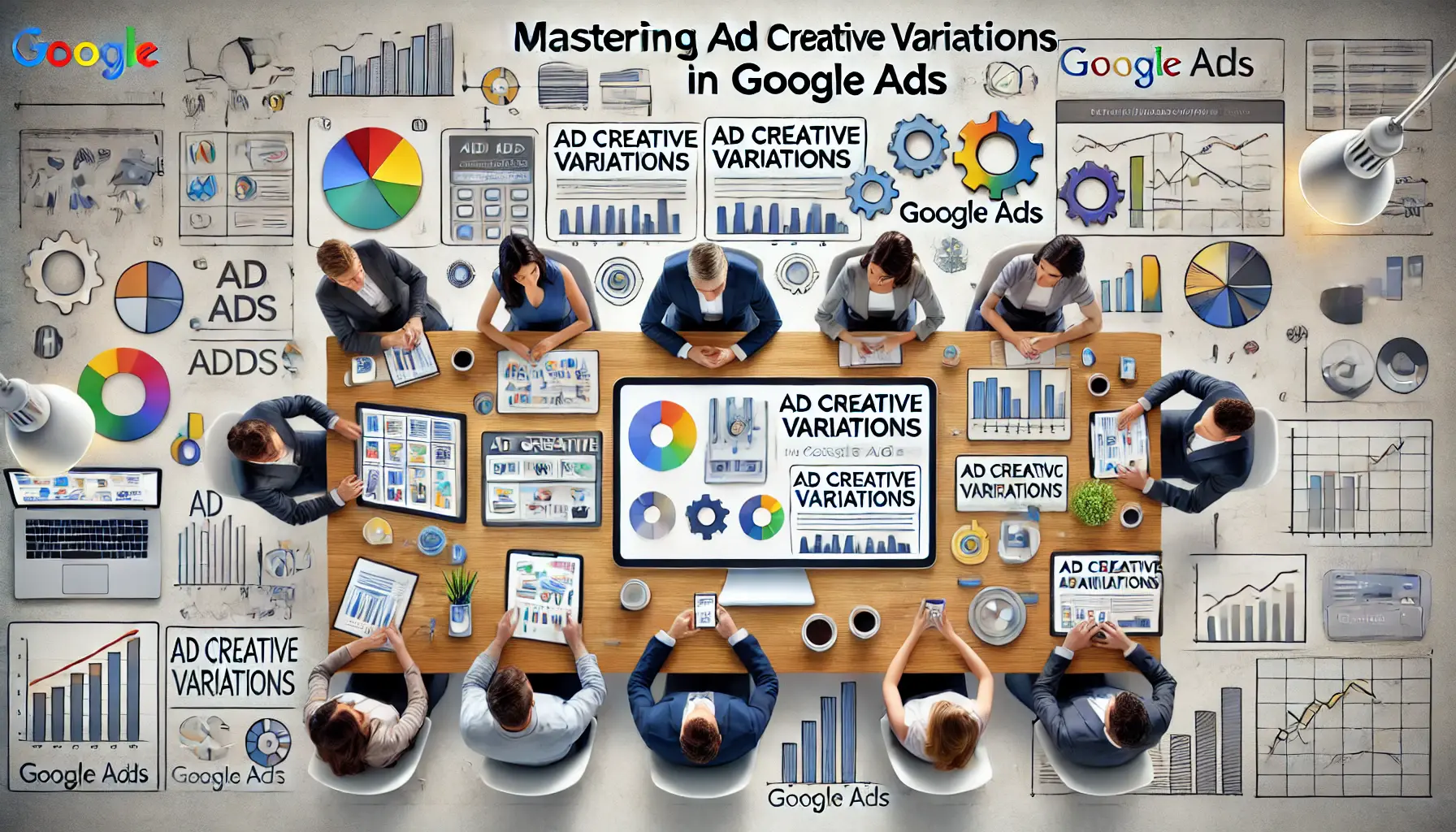
Marketing strategy session focused on refining ad creative variations.
Conclusions: How to Master Ad Creative Variations in Google Ads
Ad creative variations are an indispensable tool in the ever-changing world of digital marketing.
When executed with the right strategies, ad creative variations can significantly boost performance in Google Ads through increased engagement, higher click-through rates, and improved conversions.
However, to fully realize their potential, advertisers must avoid common pitfalls and stay informed about future trends and developments in ad creative optimization.
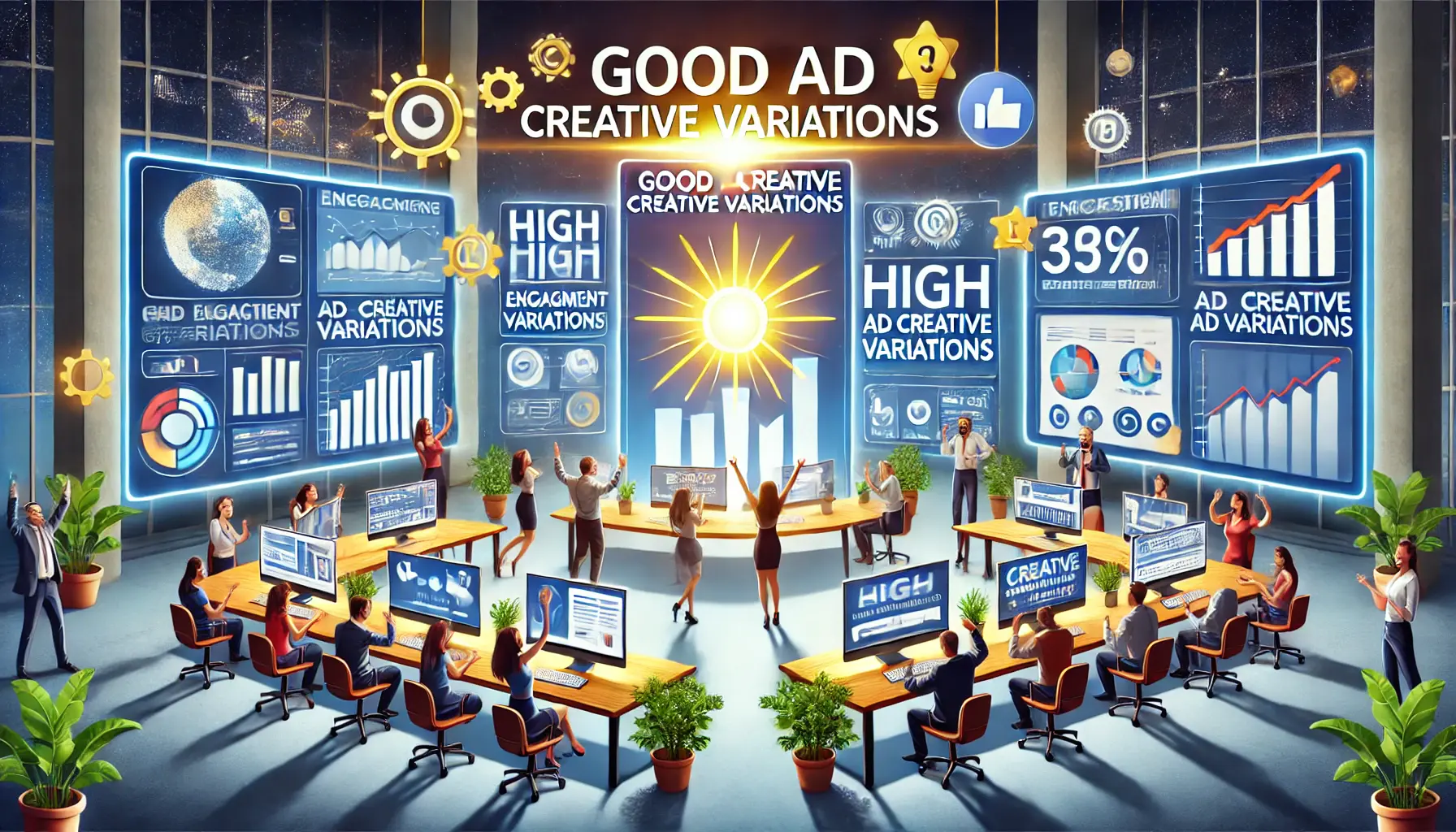
Marketing workspace showcasing successful ad variations and celebrating results.
The Power of Good Ad Creative Variations
The process of producing effective ad creative variations allows marketers to target specific audience segments with personalized and relevant content.
You can test various headlines, images, and calls to action to determine what works best for each group.
This dynamic approach ensures that ads are updated based on user preferences and behavior, keeping campaigns highly relevant and engaging.
By automating ad variant creation with AI-powered tools, advertisers can streamline the testing process and accelerate optimizations, leading to even better campaign outcomes.
Machine learning enhances this process by enabling the prediction of which ad creative variations will perform best, allowing for continuous refinement of marketing strategies.

Cluttered desk showcasing ineffective ad strategies and mistakes.
Common Mistakes to Avoid
While ad creative variations offer great potential, they can also lead to inefficiencies if not executed correctly.
Advertisers should avoid overusing similar variations that provide little insight and instead focus on creating distinct differences.
Decisions should be based on data-driven insights rather than assumptions to ensure that campaigns are optimized for the best possible performance.
It’s crucial to align ad creative variations with campaign goals.
Whether the objective is brand awareness or conversions, the creative elements must reflect the specific goals of the campaign.
Additionally, remember to optimize for mobile users to ensure that ad variations perform well across all devices.

Marketing team analyzing futuristic advertising technologies.
Future-Proofing Your Ad Strategy
The future of ad creative variations will be driven by AI, automation, and machine learning.
These technologies will enable advertisers to deliver personalized ads at scale while reducing the time and resources needed to manage campaigns.
Interactive and video ad formats will also play a key role in engaging audiences, and privacy regulations will necessitate more transparent data practices.
As digital marketing continues to evolve, staying ahead of these trends by consistently testing and optimizing ad creative variations is key to long-term success.
By leveraging AI, dynamic ads, and automation tools, advertisers can future-proof their campaigns and maintain a competitive edge in the crowded digital landscape.
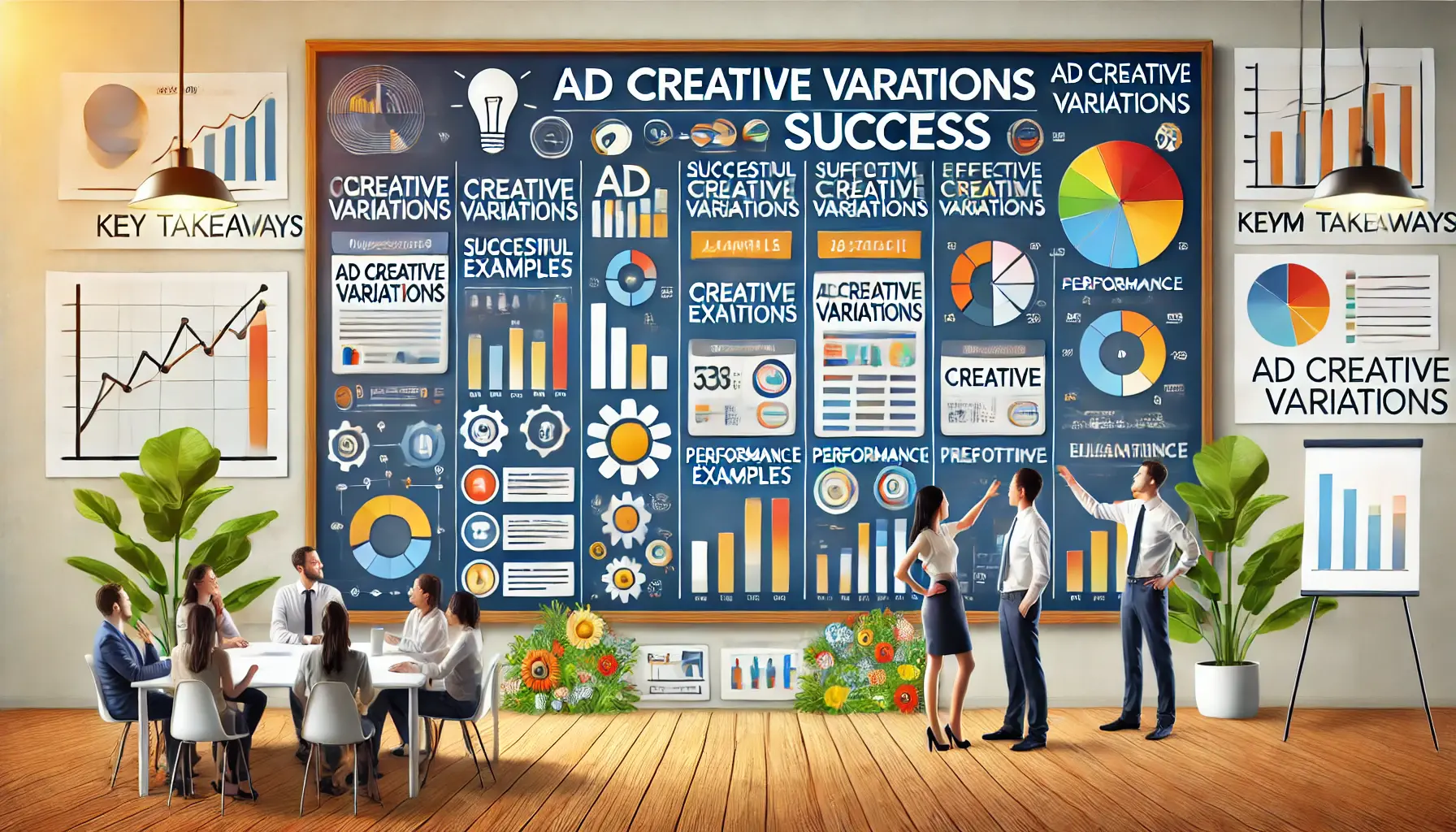
Marketing team discussing successful ad examples and performance metrics.
Key Takeaways for Ad Creative Variations Success
- Always test distinct ad variations to gain meaningful insights.
- Use data-driven insights to continuously optimize your campaigns.
- Align ad creative variations with specific campaign goals, whether for conversions or brand awareness.
- Optimize your ad creative variations for mobile to ensure seamless performance across all devices.
- Stay ahead of future trends by adopting AI, automation, and privacy-conscious strategies.
By mastering the art of ad creative variations, you can maximize the effectiveness of your Google Ads campaigns, drive better results, and stay competitive in the ever-changing digital marketing landscape.
Mastering ad creative variations can increase engagement, improve CTRs, and boost overall ad performance.
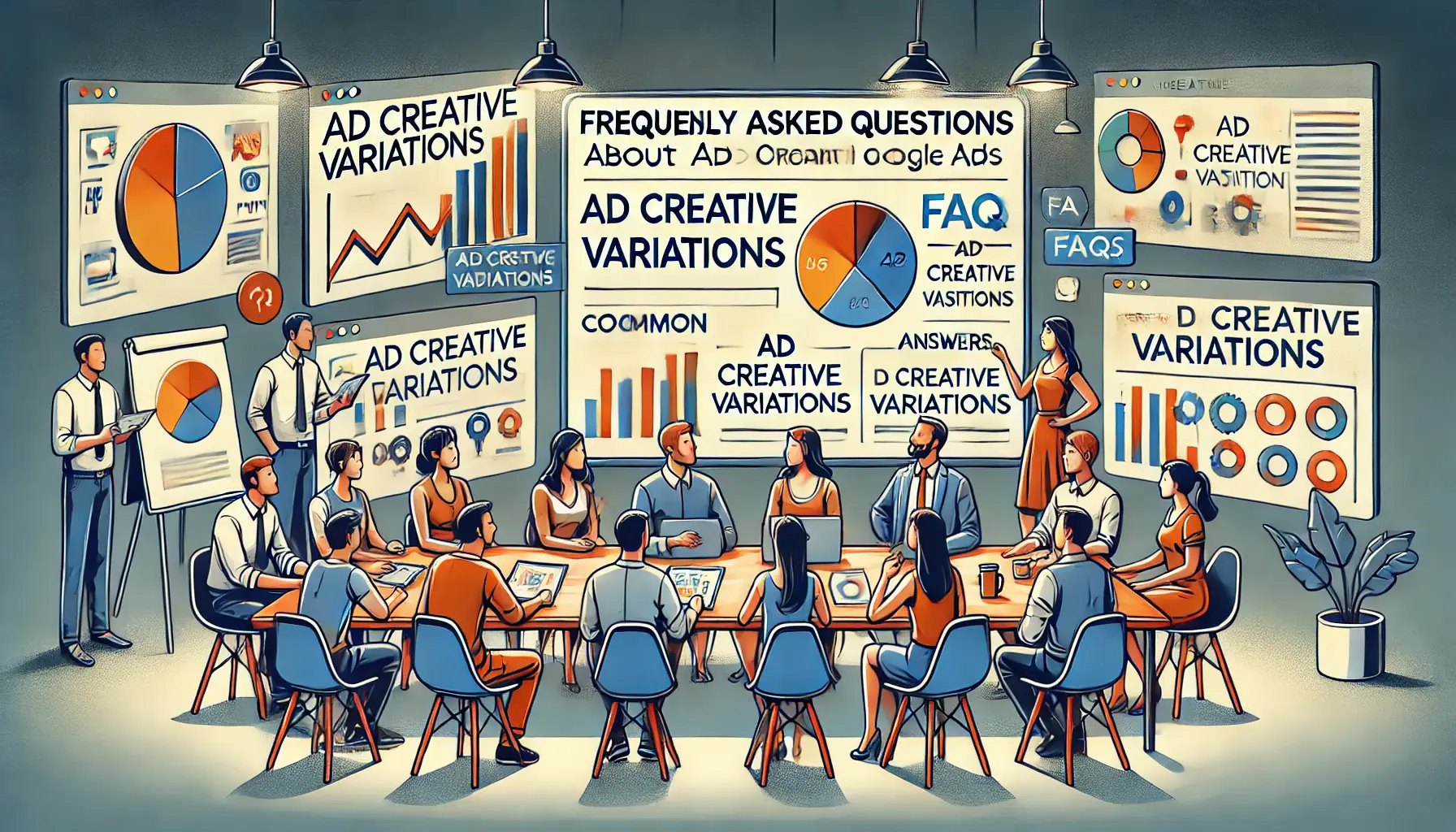
Marketers discussing common questions and answers related to ad creative variations.
Your campaigns can be managed by an agency specialized in Google Ads, check out our service page.
Frequently Asked Questions About Ad Creative Variations in Google Ads
Here are some of the most common questions people ask about ad creative variations in Google Ads and how to use them effectively to optimize campaign performance.
Ad creative variations refer to different versions of an ad that test various elements like headlines, images, and calls to action.
These variations help identify which combination works best to engage specific audience segments.
By testing multiple versions of an ad, ad creative variations help advertisers determine what resonates best with their audience.
This process increases engagement, improves click-through rates, and boosts conversions for a more effective Google Ads campaign.
Key metrics for tracking the performance of ad creative variations include click-through rate (CTR), conversion rate, and cost per conversion (CPC).
These metrics provide insights into which variation performs best for your target audience.
AI can automate the creation and testing of ad creative variations, helping advertisers quickly optimize ads.
AI-driven tools can personalize ads based on user behavior, improving engagement and driving better campaign results.
Avoid creating overly similar ad creative variations that provide limited insights.
Ensure ad variations align with campaign goals and are based on data-driven insights.
Also, optimize for mobile users to maximize ad performance across all devices.
Aligning ad creative variations with campaign goals ensures that your ad strategy is focused and effective.
Whether targeting conversions or brand awareness, creative elements should support the specific objectives of the campaign.
Privacy regulations like GDPR and CCPA influence how advertisers collect and use consumer data for personalizing ad creative variations.
Advertisers must adopt transparent data practices to comply with these regulations while delivering relevant, effective ads.
